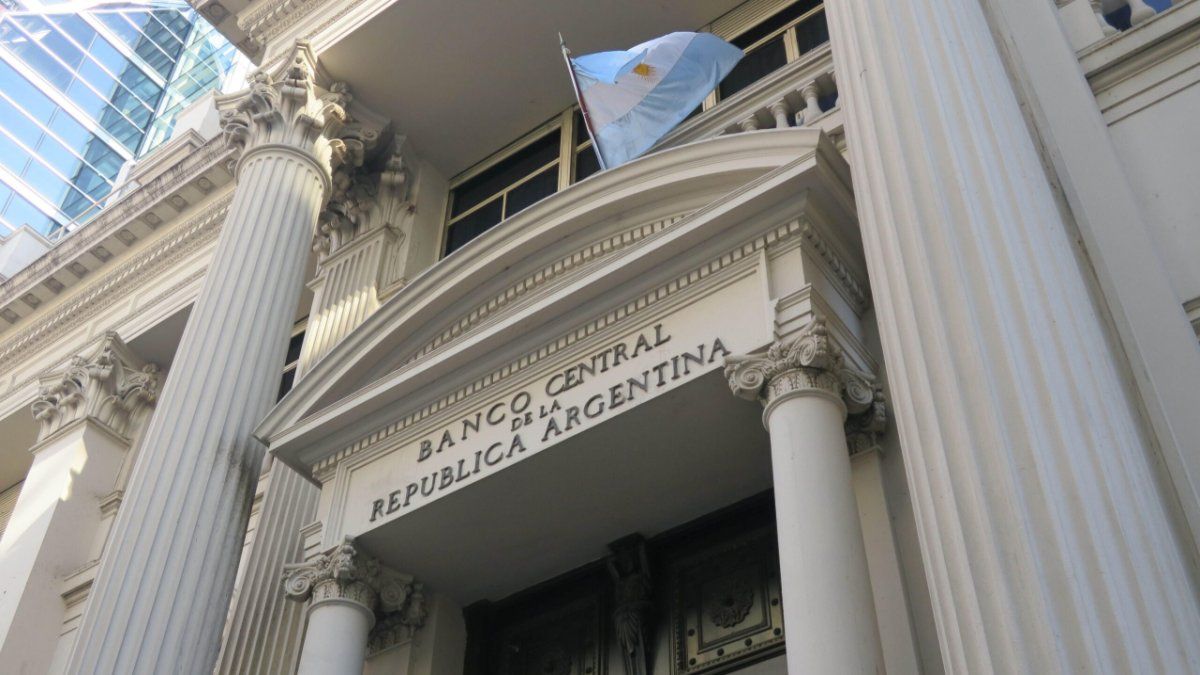Let’s review what July brought as information about the country we are living in. With this review, the conclusion is inevitable: the libertarian model cannot work.
The exchange balance of the Central Bank of the Argentine Republic The Central Bank (BCRA) showed a positive current account of 1.161 billion dollars for May. However, registered imports were 3.744 billion dollars, while according to INDEC data, accrued imports amounted to 4.966 billion dollars, evidencing a considerable “debt” with importers.
In addition, an income from financial loans was reported for 200 million dollarswhich however failed to secure a foothold in reserves. These data indicate significant pressure on the BCRA’s reserves and growing commercial debt that could lead to more serious problems in the short term.
The exchange and financial markets have witnessed a week of notable instability, failing to capitalize on the Bases law, the famous “selling on the news,” but a blow that the government did not expect. The blue dollar experienced an increase of 20 pesos, reaching 1,425 pesos, while sovereign bonds continued their fall, approaching the lows of June.
He Risk country The exchange rate rose to 1,570 basis points and parallel exchange rates increased by 4% in just two days. However, it later stabilised and broke through the 1,500-point mark again. This situation forced the Government to reiterate that it is not planning an abrupt devaluation, although the exchange rate gap widened to 56%. Press conference of the Minister of Economy, Luis Caputo, and the president of the Central Bank, Santiago Bausili (on June 28), where the migration of debt from the Central Bank to the Treasury was announced, it was received negatively by investors, exacerbating volatility in key economic indicators.
The government’s exchange rate policy has focused on maintaining a 2% monthly crawling peg until the end of the year, which would bring the value of the dollar to 1.016 pesos by December. This strategy reflects the intention to control the devaluation in a gradual and predictable manner, but the situation looks complicated for the government’s obsessions, and questions arise about the sustainability of the economic model. Only a CPI breaking through the 2% monthly mark in these months can save the program. Although without fresh dollars there will be no opening of the exchange rate without shocks. We do not rule out that the government does not care about a “last shock” prior to a fixed exchange rate, as occurred with convertibility in February 1991. As can be read, there is a lot of uncertainty.
The cement shipments (AFCP) in June 2024 registered a monthly drop of 7.4% and an annual drop of 32.8%, with a level of 727,405 tons, the worst level since June 2008. This decline suggests a new slowdown in public works, possibly due to a further reduction in public spending.
He index Buildrelated to private construction, rose 9.7% in June compared to May, but remains more than 30% down compared to June 2023. Construction activity shows weakness, reflecting the economic slowdown with negative implications for employment and economic development.
In the automotive and agricultural machinery industrysales of zero kilometer units fell by 14.7% compared to May, with a negative level of exports since January. In June, 32,029 cars were manufactured, 16.7% less than in the previous month, and 40.2% less than in June 2023, when 53,522 units were produced. Registration of new vehicles decreased by 14.1% compared to May, totaling 29,878 units, representing a drop of 25.5% compared to June 2023. Agricultural machinery also showed negative numbers in June, with a 33.3% drop in registrations of self-propelled equipment compared to June 2023, and a 36.0% decline compared to May.
The social situation in Argentina is worrying. According to the Observatory of the Argentine Social Debt of the Catholic University of Argentina (UCA), the poverty reached 55% of the population in March, while indigence rose to 17.5%. This means that 25 million Argentines live in poverty and 7.8 million are destitute. meat consumption has fallen to the lowest level in 110 years, with annual per capita consumption projected at less than 44.8 kilos, well below the historical average of 72.9 kilos. The economic and social situation has reached alarming levels, reflecting the devastating impact of the current government’s non-existent social policies.
The budget progress report to Congress reveals that in the first five months of the year, The government has executed only 14.9% of its budget for services for the industry, equivalent to 26 billion pesoswhile it has allocated 52.5% of the budget to public debt, an amount that amounts to 28.6 trillion pesos. These figures show the government’s priorities, focusing significantly on the payment of public debt at the expense of investment in industrial programs, which underlines an economic policy oriented towards short-term financial stabilization, while industry, crucial for sustainable economic growth, social inclusion and technological research, receives considerably less attention.
The economic and social situation in Argentina reflects a deep crisis characterized by financial instability, an alarming decline in production and consumption, and a significant increase in poverty and indigence. The automotive and agricultural machinery sectors have shown worrying declines, as has the construction sector, which has experienced a considerable collapse. Meat consumption has reached historically low levels, indicating a deterioration in the purchasing power of the population. Despite a brief deceleration of inflation, this positive trend has stopped, adding another layer of complexity to the economic recovery.
Finally, we are extremely concerned about a situation that the government has no roadmap for: growth requires pesos, if there is to be a jump in activity it will have to happen hand in hand with more sales or more exports, in both cases it will require more pesos on the street. But the strategy of the Ministry of Economy to transfer the debt from the BCRA to the Treasury presents an insurmountable contradiction: the interests that the Treasury must meet will require pesos that will initially be absorbed from the monetary base. Where will the money for growth come from? Our hypothesis? The government’s last real concern is growth.
The current situation demands effective and urgent measures to reactivate the economy and improve the living conditions of citizens, something that the government of Javier Milei has not been implemented so far.
Source: Ambito
David William is a talented author who has made a name for himself in the world of writing. He is a professional author who writes on a wide range of topics, from general interest to opinion news. David is currently working as a writer at 24 hours worlds where he brings his unique perspective and in-depth research to his articles, making them both informative and engaging.




